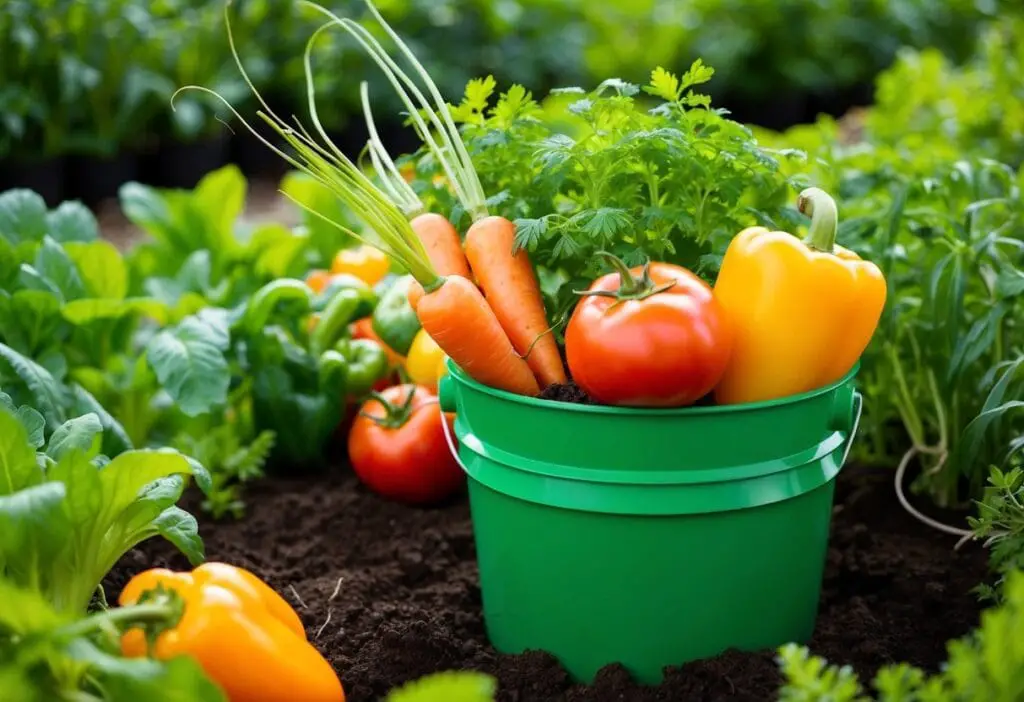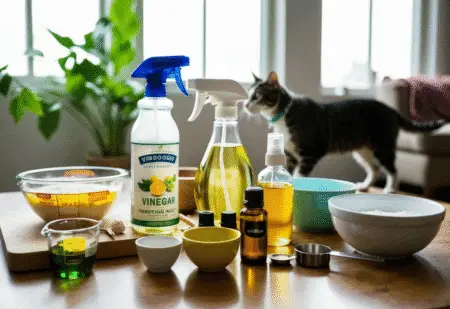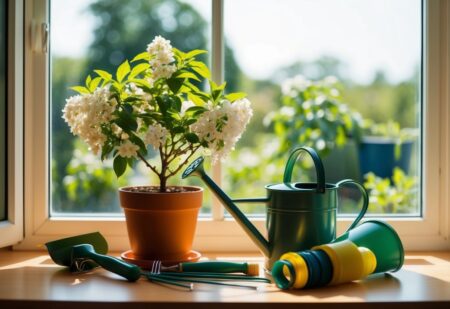Bucket gardening is a great way to grow vegetables in small spaces. It allows even beginners to experience the joy of gardening.
Some of the best vegetables for bucket gardening include tomatoes, peppers, and cucumbers. They thrive in containers while providing a satisfying harvest.
With the right containers and care, anyone can enjoy the benefits of homegrown vegetables, regardless of their gardening experience.
Choosing the right plants is essential for a successful bucket garden. Vegetables that adapt well to container life not only grow efficiently but also often yield more fruit in limited spaces.
This method of container gardening is perfect for urban dwellers or anyone looking to maximize their growing potential without needing a traditional garden.
Table of Contents
Key Takeaways
- The best vegetables for bucket gardening include tomatoes, peppers, and cucumbers.
- Selecting proper soil and regular maintenance are vital for plant health.
- Container gardening allows for efficient vegetable growth in limited spaces.
Container Size and Material
When choosing a container, size matters. For most vegetables, a depth of at least 12 inches is ideal, while the diameter should be 8-12 inches. This allows enough room for the root system to develop.
Materials vary, with common options including plastic, clay, and metal.
Plastic containers are lightweight and retain moisture well. Meanwhile, clay pots are breathable but may dry out quickly. Metal can heat up, which might affect roots.
Ensure containers have a minimum of two drainage holes to prevent waterlogging.
For those looking for convenience, self-watering containers can provide a consistent moisture level. These can help reduce the frequency of watering, promoting healthier growth.
Drainage Essentials
Drainage is key to preventing root rot and other issues. Without proper drainage, excess water can accumulate, suffocating the roots and leading to plant decline.
Containers should have drainage holes at the bottom. If a container lacks holes, consider drilling some before planting. Adding a layer of gravel or stones at the base can improve drainage.
For optimal performance, monitor the moisture level. A well-draining setup will support healthy growth by allowing the root system to breathe. This creates a balanced environment for vegetable plants to thrive.
Selecting Soil and Compost
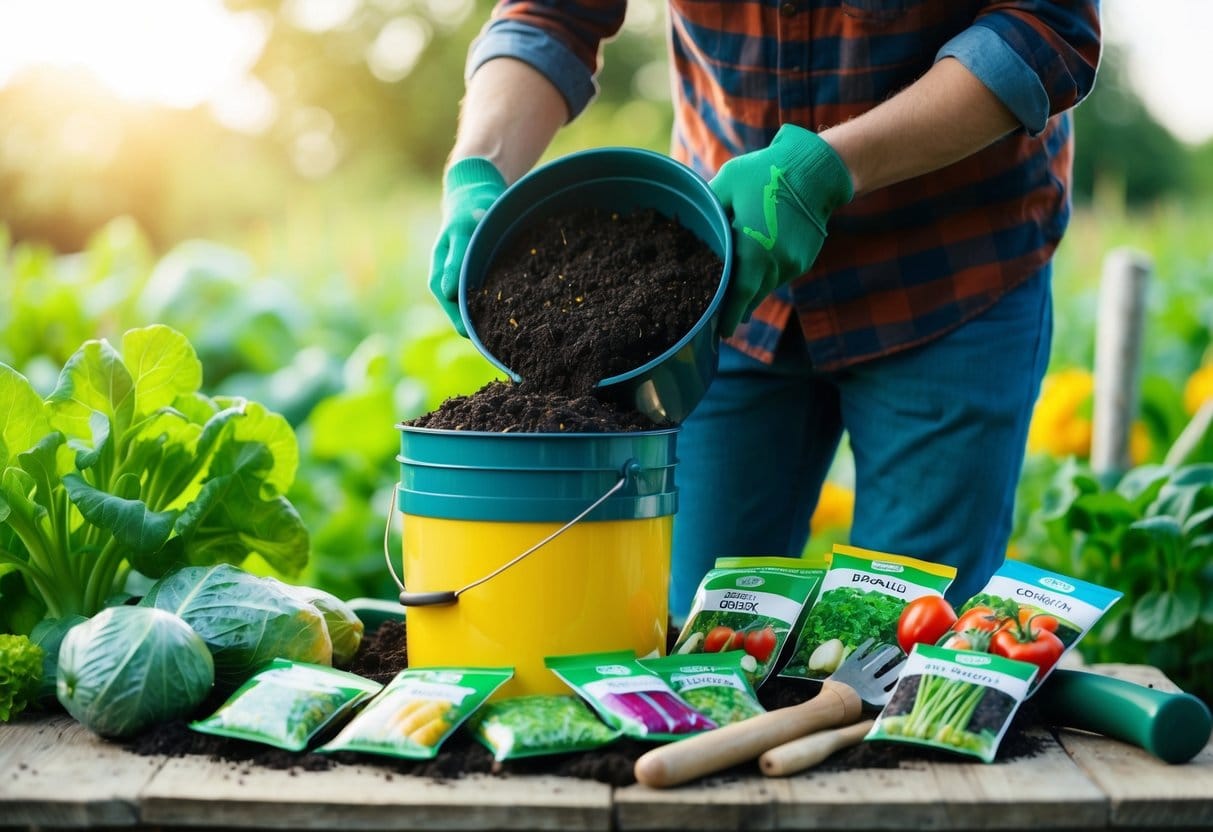
Choosing the right soil and compost is crucial for successful bucket gardening. The correct mix provides nutrients and ensures proper drainage, which helps plants thrive.
Potting Mix Specifications
A good potting mix is essential for bucket gardening. It should be lightweight to facilitate drainage and aeration. A recommended mix includes peat moss, perlite, and vermiculite.
- Peat Moss: Retains moisture but allows excess water to escape.
- Perlite: Improves drainage and aerates the soil.
- Vermiculite: Holds moisture and supplies essential nutrients.
It’s important to avoid garden soil, as it may compact in containers and hinder root growth. A quality potting soil should be free from pests and diseases. Look for mixes specifically labeled for container gardening.
Compost Integration
Adding compost to potting soil enriches it with nutrients. Compost improves soil texture and enhances water retention. It can also introduce beneficial microbes to support plant health.
- Homemade Compost: Made from kitchen scraps and yard waste, it’s an excellent choice for nutrient diversity.
- Store-Bought Compost: Often contains various organic materials, ensuring a balanced nutrient profile.
Mixing compost with potting soil in a ratio of 1:3 is generally effective. This combination provides a rich growing medium that promotes strong root systems and healthy plants. Always ensure that the compost is well-decomposed to prevent introducing pathogens.
Plant Selection for Bucket Gardens
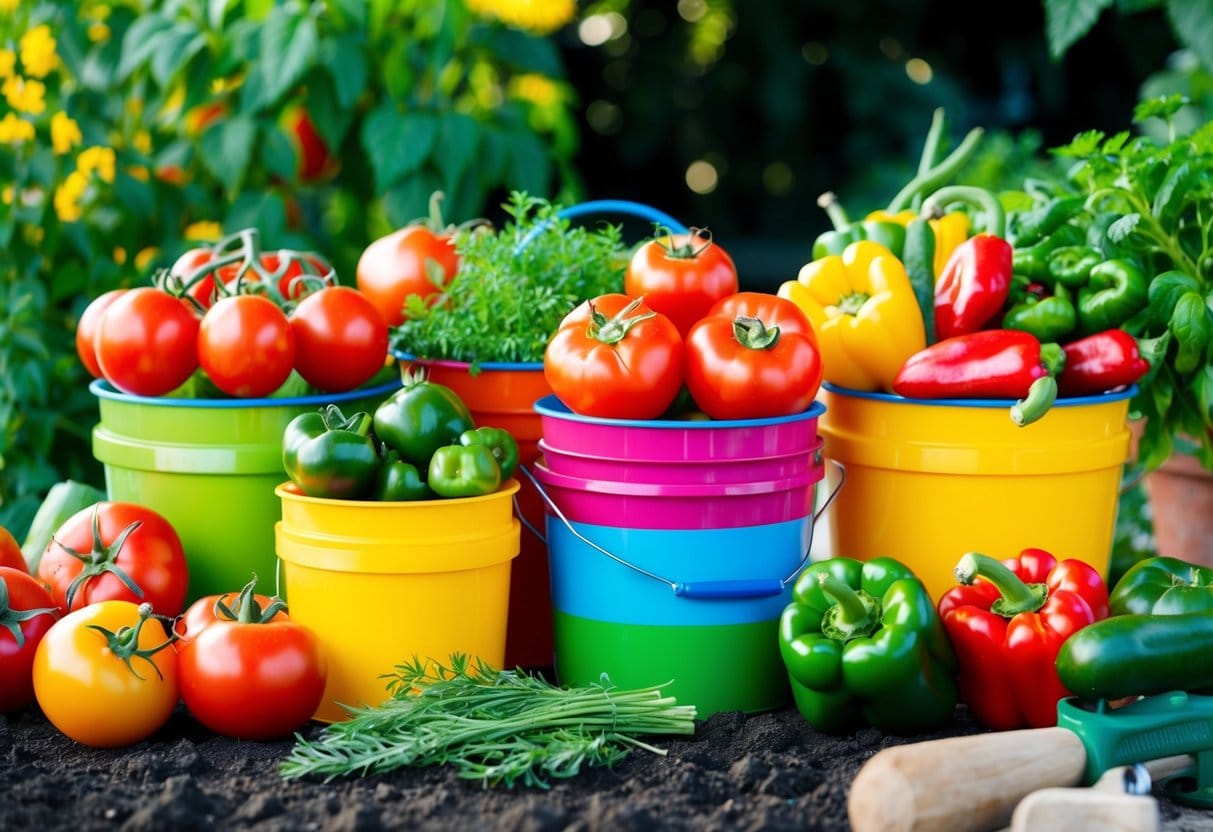
Choosing the right plants is crucial for successful bucket gardening. This section focuses on the best vegetables to grow in containers and the benefits of incorporating herbs.
Best Vegetables for Containers
Certain vegetables thrive in bucket gardens. Tomatoes are a top choice. They do well in 5-gallon buckets, especially compact varieties.
Peppers also adapt well. They require less space and can produce fruit in smaller containers.
Cucumbers benefit from a trellis, making them ideal for vertical growth.
Lettuce and other leafy greens like spinach or arugula grow fast and do not need deep soil. They can flourish in smaller pots.
Root vegetables such as carrots can work too, but they need deeper buckets to accommodate their growth. Strawberries can also be successfully grown in buckets, providing sweet fruit without requiring much space.
Incorporating Herbs
Herbs are great companions in bucket gardens. They grow well in small spaces and add flavor to meals.
Basil is a popular herb to grow alongside tomatoes, enhancing their taste.
Other good options include oregano, parsley, and cilantro. They thrive in smaller pots and need minimal care.
Growing herbs in the same buckets as vegetables can help with pest control. Plants like rosemary can deter pests from tomato plants. Using companion planting strategies can maximize growth and health.
Optimizing Plant Health
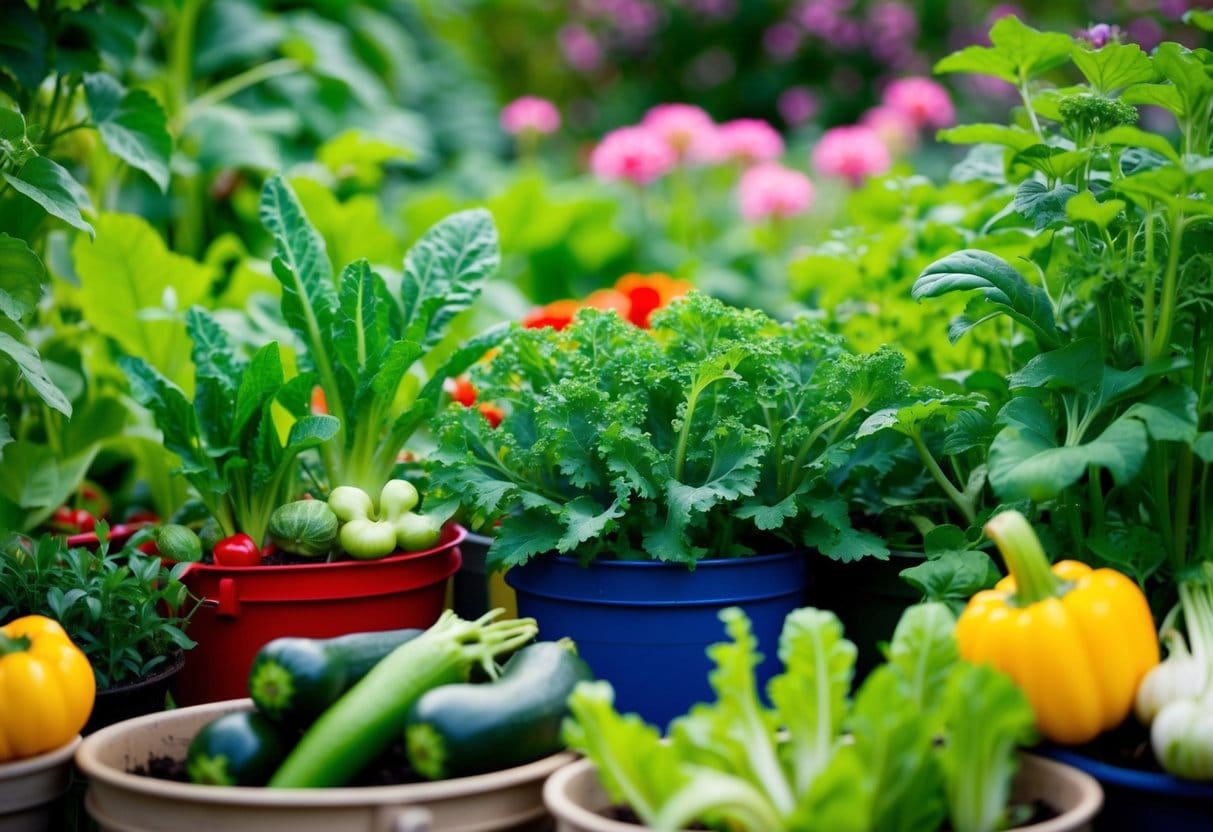
Maintaining optimal plant health is essential for a successful bucket garden. Sunlight and water management are two critical factors that significantly influence the growth and yield of vegetables.
Sunlight and Shade Requirements
Most vegetables thrive on sunlight. Ideally, they need 6 to 8 hours of direct sunlight each day. It’s crucial to place your buckets in a spot where they receive ample light.
Some plants, like lettuce or spinach, prefer partial shade. This can be beneficial during hot summer months. They should be protected from harsh midday sun to prevent wilting.
It’s also wise to rotate bucket placement. Moving them every few weeks can help ensure even sun exposure. Be aware of tall structures or plants nearby that may cast shadows.
Watering Techniques
Watering is vital for maintaining plant health. Consistent moisture is key, but the method matters.
Containers dry out faster than traditional gardens, so regular checks are necessary.
Drip irrigation systems can offer a reliable way to provide consistent water. This setup ensures water reaches the roots without wasting it.
Hand watering is also effective but requires more attention.
When watering, aim for the base of each plant. Avoid wetting the leaves, as this can lead to fungal issues.
A good rule is to water deeply, ensuring the soil is moist several inches down.
Support Structures for Vertical Growth
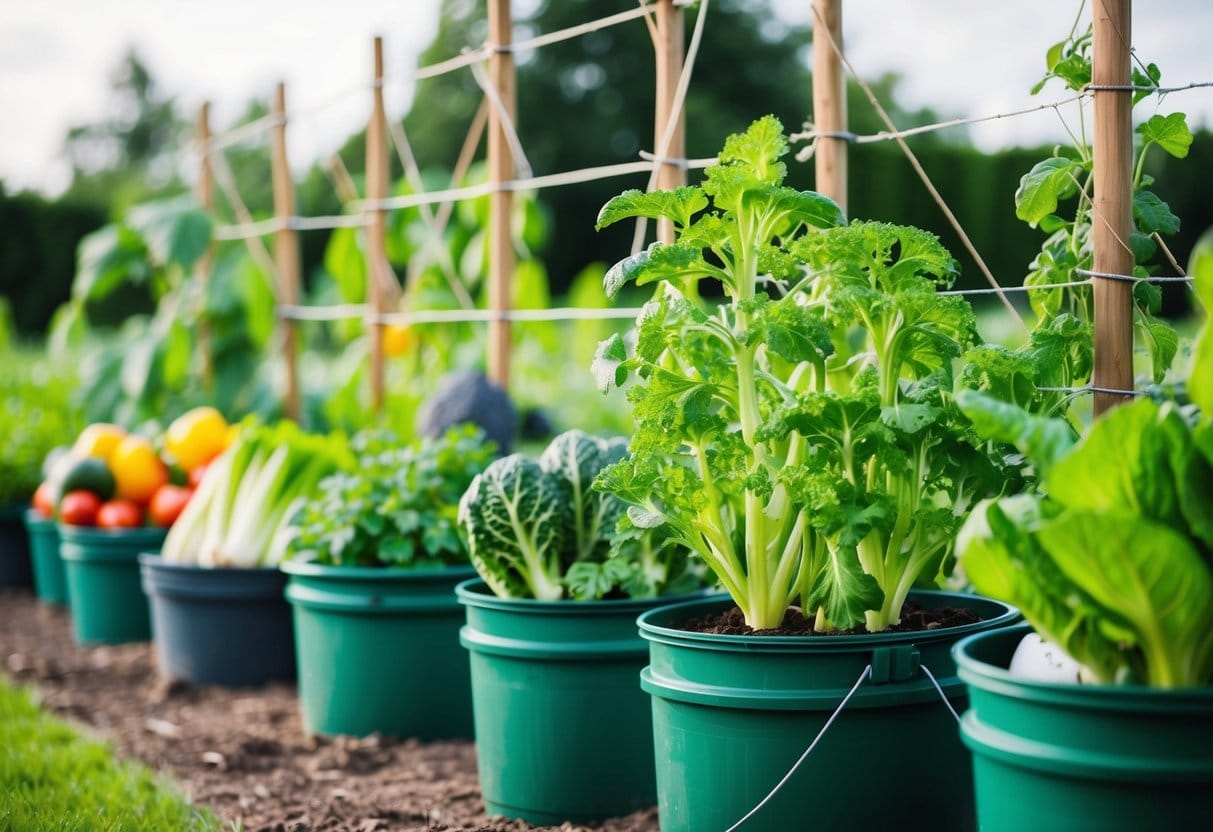
Building support structures can greatly enhance the success of vegetables grown in buckets. These supports help plants grow upward, maximizing space and improving air circulation. Two popular options are trellises and tomato cages, each with unique benefits.
Trellising Options
Trellises are excellent for supporting climbing plants. They can be made from various materials, such as wood, metal, or plastic. A few key types include:
- Wooden Trellis: Durable and customizable, it blends well into gardens.
- Metal Trellis: Strong and weather-resistant, these last longer.
- Wire Trellis: Easy to install and great for lightweight plants.
Trellises can be placed directly in the bucket or close by.
Climbing plants like peas and pole beans thrive when given the right support. They wrap their vines around the trellis, which helps keep the crops off the ground. This method reduces the risk of disease and pest exposure.
Using Tomato Cages
Tomato cages are a popular choice for supporting tomato plants and other sturdy vegetables. These cages are typically made of metal or sturdy plastic and come in various sizes. They provide a simple way to keep plants upright.
When using a tomato cage, place it in the bucket before planting to avoid damaging roots.
As the plant grows, it can be gently guided into the cage.
This method is especially beneficial for plants that develop larger fruits, such as tomatoes and peppers. Cages help prevent plants from falling over, ensuring better access to sunlight and airflow.
Fertilization and Nutrients

Container gardening requires a focus on fertilization to ensure plants receive the necessary nutrients. Different vegetables have varying needs. It’s essential to identify those that require more nutrients and to know how to apply organic fertilizers effectively.
Identifying Heavy Feeders
Heavy feeders are vegetables that consume a lot of nutrients. Common examples include tomatoes, peppers, eggplants, and cucumbers.
These plants thrive on high levels of nitrogen, phosphorus, and potassium.
Regular monitoring and fertilization are crucial. A good practice is to check for signs like yellowing leaves or stunted growth. These may indicate a nutrient deficiency.
Those who grow heavy feeders should consider using a balanced fertilizer every couple of weeks during the growing season.
Organic Fertilizer Applications
Organic fertilizers can provide a safe way to nourish plants. Options like compost, well-rotted manure, or seaweed extract are popular. They not only feed the plants but also enrich the soil over time.
For container gardens, slow-release organic fertilizers are recommended. They gradually release nutrients, reducing the need for frequent applications.
For example, a good monthly schedule can include a seaweed feed, combined with a specific tomato fertilizer as needed. This strategy supports healthy growth without chemical additives.
Maintaining Your Container Garden

Maintaining a container garden requires attention to detail and proactive care. This involves monitoring for pests and diseases, as well as adjusting gardening practices with the seasons.
Pest and Disease Control
Keeping a close eye on pests and diseases ensures healthy container plants. Common pests include aphids, spider mites, and whiteflies.
Regularly check the undersides of leaves and around soil.
To combat these pests, natural options are effective. For example, introducing ladybugs can help control aphid populations.
Neem oil or insecticidal soap can also be used to treat infestations without harming the plants.
Diseases such as root rot can occur with poor drainage. Ensure pots have drainage holes and use quality potting soil.
Regularly inspect plants for yellowing leaves or spots, as these can indicate disease. Remove affected areas promptly to prevent spreading.
Seasonal Gardening Tips
Different seasons bring unique challenges and opportunities for container gardening.
During spring, choose fast-growing vegetables like lettuce and radishes. These can be planted early and harvested quickly.
In summer, heat can stress plants, so regular watering is crucial. Aim to water in the morning or evening to reduce evaporation.
Mulching can help retain moisture and keep roots cool.
As fall approaches, consider planting hearty greens such as kale or collards. These vegetables can withstand cooler temperatures and often taste better after frost.
Use frost cloths to protect plants on chilly nights.
Choosing the Right Containers
Selecting the appropriate containers is crucial for successful bucket gardening. Factors like size, material, and drainage all play a significant role in plant health and growth.
Frequently Asked Questions
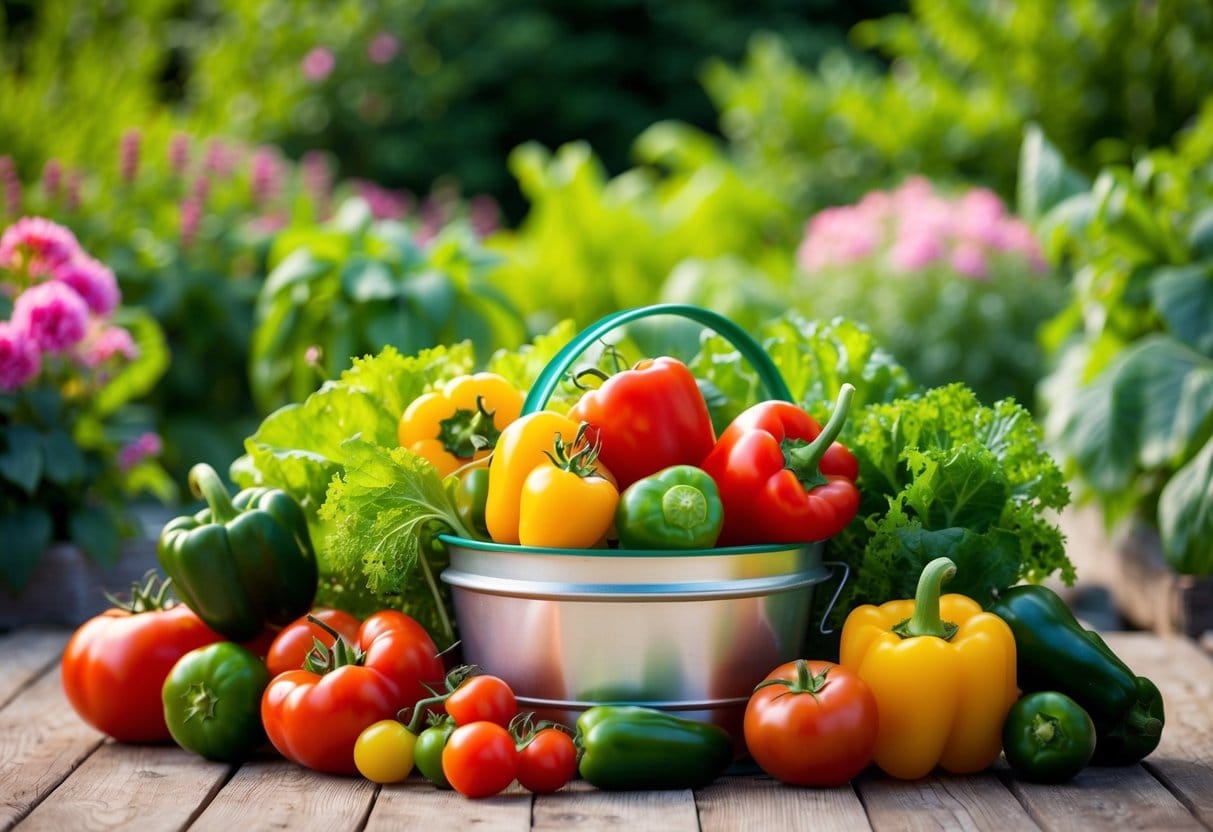
This section addresses common queries about bucket gardening. It covers suitable vegetables, soil choices, layout, and tips for beginners.
What are the top vegetables suitable for growing in 5-gallon buckets?
Several vegetables grow well in 5-gallon buckets. Some top choices include tomatoes, peppers, and lettuce.
Leafy greens like spinach and kale are also great options due to their compact root systems.
Which vegetables thrive best in container gardening environments?
Vegetables that adapt well to container gardening include carrots, radishes, and herbs like basil and parsley.
These plants typically require less space and can flourish in a confined area.
For beginners, what are the easiest vegetables to start with in bucket gardening?
Beginners should consider starting with easy-to-grow vegetables like radishes or lettuce. These plants grow quickly and do not need extensive care, making them ideal for novice gardeners.
How does one decide on the best soil mix for container-grown vegetables?
Choosing the right soil mix is crucial for container gardening. A good mix should include a balance of potting soil, compost, and perlite or vermiculite for drainage.
Can you recommend a container gardening layout for maximizing yield?
To maximize yield, use a grid layout when planting. This method allows for more efficient use of space and ensures that each plant receives adequate light and air circulation.
What plants are most productive when grown in pots or buckets?
Certain plants are particularly productive in pots. These include cherry tomatoes and bush beans. They offer high yields and can thrive even in smaller spaces.


